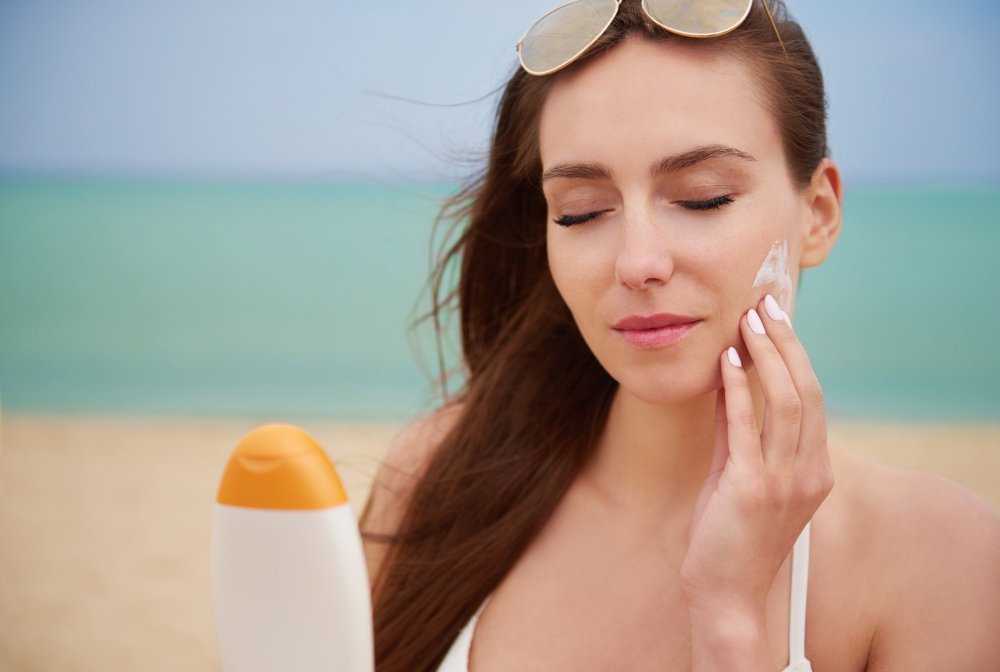Sunscreen: the importance of using it
Sunscreen is a powerful weapon in the ongoing battle against skin damage, aging, and even cancer caused by harmful UV radiation. In this article, we delve into the benefits of sunscreen, exploring its critical role in safeguarding our skin’s health, regardless of the season or setting. From understanding SPF ratings to debunking common myths, join us as we expose the secrets to effective sunscreen usage and embrace a lifetime of radiant and protected skin.
Why is it so important to use sunscreen?
The use of sunscreen is crucial for protecting the health of our skin in various ways: it reduces the risk of skin cancer, slows down the aging process, prevents sunburn caused by UV exposure and avoids the formation of spots. It’s important to emphasize that its application should be consistent throughout the year, not just in summer, on sunny days, or when going outdoors. Protecting our skin from sun damage is a daily task.
Therefore, it’s advisable to make sunscreen a habit, incorporating it as the final step in our morning skincare routine, after cleansing, toning and moisturizing the skin.
Furthermore, it’s essential to choose the right type of sunscreen according to the needs of our skin and the amount of time we will be exposed to the sun. It’s important to know that the SPF (Sun Protection Factor) of each product indicates its sun protection capacity: the higher the SPF number, the greater the protection offered. So, choosing the best SPF for face is really important for adequate protection.
How to choose the correct SPF for face?
With a plethora of options flooding the market, deciphering which product offers optimal protection and benefits tailored to your skin type and preferences can prove challenging.
Understanding your skin type is fundamental in selecting the best SPF for your face to prevent sun damage. Skin types are visually classified on a scale ranging from I to VI.
- Type I encompasses individuals with fair skin, light eyes, and often red hair, who consistently burn and rarely tan. Prone to photoallergic reactions, this skin type necessitates robust protection, equivalent to SPF 50.
- Type II denotes those with very sensitive and delicate skin, typically with blonde hair and light eyes, who also seldom tan and may experience allergic reactions to prolonged sun exposure. Similar to Type I, SPF 50 is imperative for effective protection.
- Type III individuals possess intermediate skin tones that tend to redden before eventually tanning after sun exposure. Opting for a medium-level protection equivalent to at least SPF 30 is recommended to counteract intense radiation.
- Type IV includes individuals with darker skin and brown hair, who tan readily with direct sun exposure.
- Type V encompasses individuals with darker skin than Type IV, requiring moderate sun protection equivalent to SPF 3-5.
- Type VI comprises individuals with very dark skin, traditionally of Black descent, boasting natural melanin that offers effective sun protection, rendering medium-level protection sufficient for their needs.

Why is it important to use sunscreen even when you’re at home?
Exposure to sunlight, as well as the blue light emitted by computers and smartphones, can have a significant impact on your skin. Sunlight has the potential to damage our skin considerably, even if we’re not directly exposed to it or lounging on the beach. That’s why it’s crucial to use sunscreen every day.
Persistent facial spots, more noticeable lines of expression or premature aging are just some of the consequences of not adequately protecting our skin from sun damage. That’s why experts recommend using sunscreen as part of your daily skincare routine, even if you spend the entire day at home, as window glass does not block UVA rays.
The use of sunscreen on vacations
While sunscreen should ideally be a daily staple in your skincare routine, its importance magnifies when embarking on trips, especially beach vacations. Simplify your skincare regimen with the best travel skincare routine steps.
- Start your routine by purifying your skin with a gentle yet effective cleanser, eliminating impurities accumulated.
- Next, invigorate and prepare your skin with a hydrating toner, ensuring it remains balanced and receptive to subsequent products.
- Opt for lightweight moisturizers and serums to replenish and energize your skin, providing essential hydration without weighing it down.
- Integrate the best SPF for your face into your routine to shield against damaging UV rays while exploring new locales.
- Lastly, remember to pack travel-sized versions of your skincare essentials to maintain consistency in your regimen.
As we can see, using sunscreen is really transcendental even if the days are cloudy or we stay at home. It’s also important to note that applying sunscreen just once a day is not enough, as the skin absorbs it and loses its protection. Indoors and outdoors, it’s recommended to reapply sunscreen every 2 hours.















Post Comment